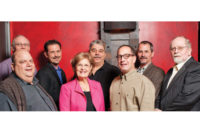Recent reports from McGraw-Hill Construction show that nonresidential construction increased 5 percent to $171.9 billion last year, with much of the growth coming from institutional structures. This year seems to continue the upward trend sending a commercial construction surge through the United States.
"Looking at the first four months of 2006 combined, actual spending was 8.9 percent higher than in the January-April 2005 period," said Ken Simonson, chief economist of the Associated General Contractors of America (AGC).
"Private nonresidential construction was up 10.8 percent year-to-date, public construction gained 9.7 percent, and private residential spending was 7.8 percent stronger.
"The year-to-date totals show that, so far, the apparent decline in residential construction is limited to improvements, which dropped 10 percent, and not a slowdown in new single-family or multifamily building, which are up 13 and 19 percent, respectively," noted Simonson.
Hospitals and health care facilities were among the largest percentage gainers in 2005, jumping 18 percent over 2004, according to McGraw Hill. April's figures show that year-to-date, hospital construction has experienced 25 percent growth, along with an 18 percent growth for lodging, and 14 percent for offices.
"A surge in nonresidential construction spending in April nearly offset a slowdown in single family home building and improvements," said Simonson.
Residential construction re-bounded 5 percent in May from a 13 month low, according to the National Association of Home Builders (NAHB). This, however, was primarily credited to builders working down a backlog of unfilled orders and unusually good weather conditions. New building permit issuance actually fell 2.1 percent. The Commerce Department reported that the pace of new construction, though up 1.957 million units, is 3.8 percent below the pace of 2005. It also showed that permit issuance was 8.5 percent behind May 2005's pace.
"The reported increase in housing starts is not inconsistent with an ongoing moderate erosion of housing market activity, a pattern shown by both current permit numbers and NAHB's surveys of single-family home builders," commented David Seiders, chief economist of the NAHB. The forecast currently shows a 14 percent decline in total housing starts from the third quarter of 2005 to the third quarter of 2007.
"The builders still are reporting reductions in housing demand, and we expect both housing starts and building permits to lose some ground as 2006 progresses," said Seiders.
The NAHB/Wells Fargo Housing Market Index (HMI) declined four points from an upwardly revised reading last month - reaching 42, it's the lowest mark since April 1995.
"Based on historical experience, particularly the 1994-95 episode, the pronounced pattern of movement in the HMI is not inconsistent with the reasonably orderly cooling-down process we're projecting for home sales and single-family housing starts in 2006," said Seiders. "We now expect new home sales to be off by 13 percent from the record posted in 2005."
The HMI fell seven points to 40 in the Northeast, four points to 25 in the Midwest, two points to 49 in the South, and one point to 61 in the West.
"Looking at the current numbers, it's important to keep one thing in perspective," noted David Pressly, NAHB president and North Carolina homebuilder. "The HMI is a measure of builder sentiment "Looking at the first four months of 2006 - and attitudes may vary by a greater degree than actual market activity."
"While the simmering down process, now underway in the housing market, would suggest that relief in overall materials prices and supply is on the way," said Carliner, "a resurgence in nonresidential construction will offset some of the slack."
Publication date: 07/03/2006







